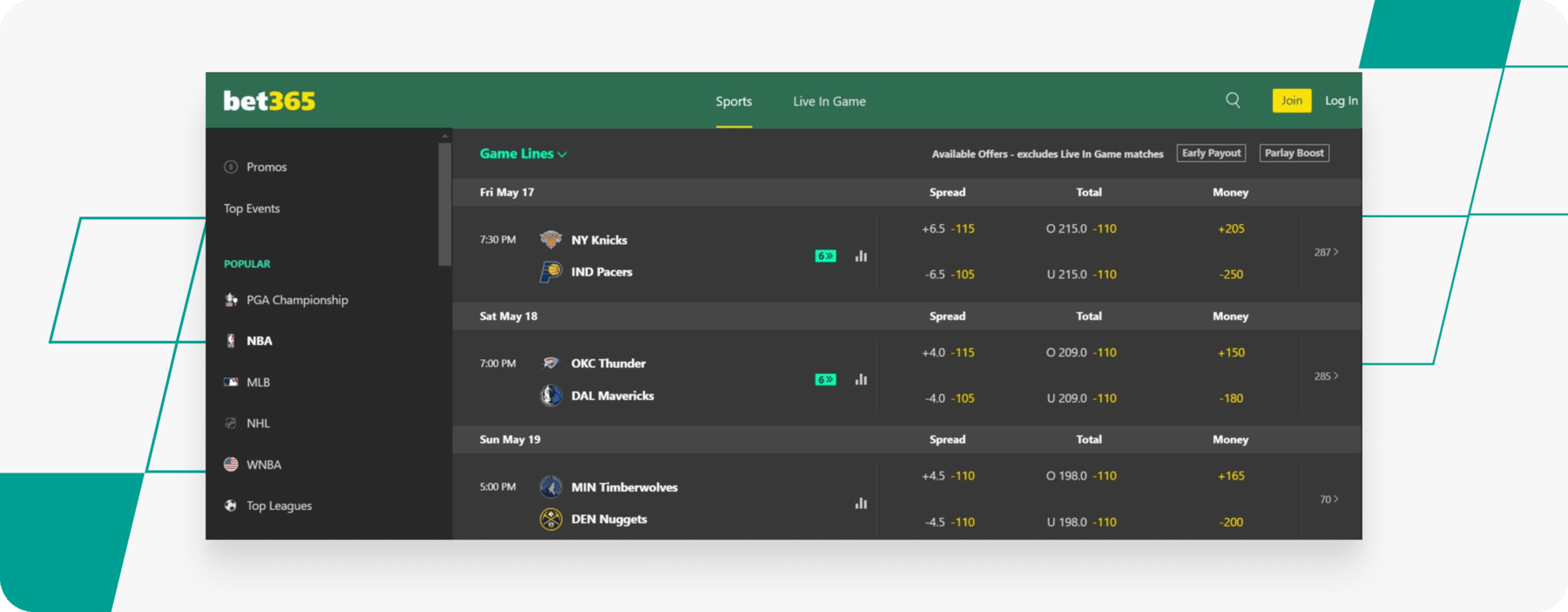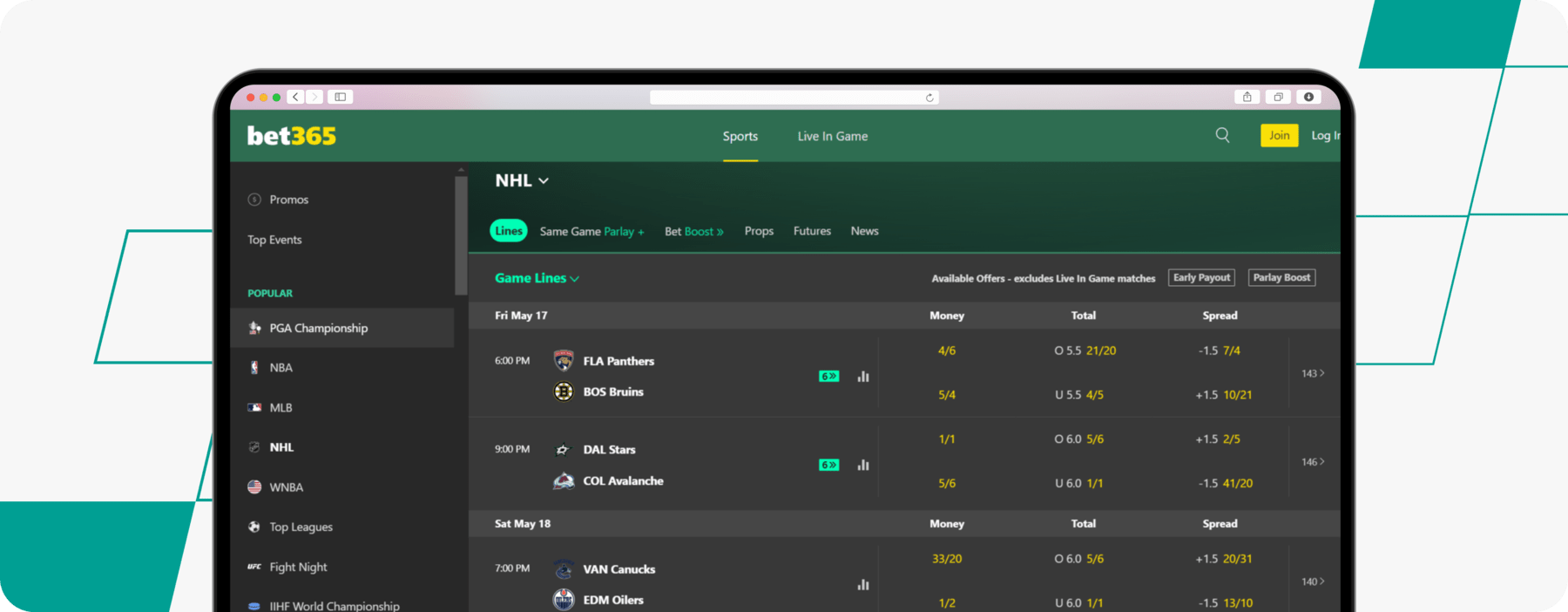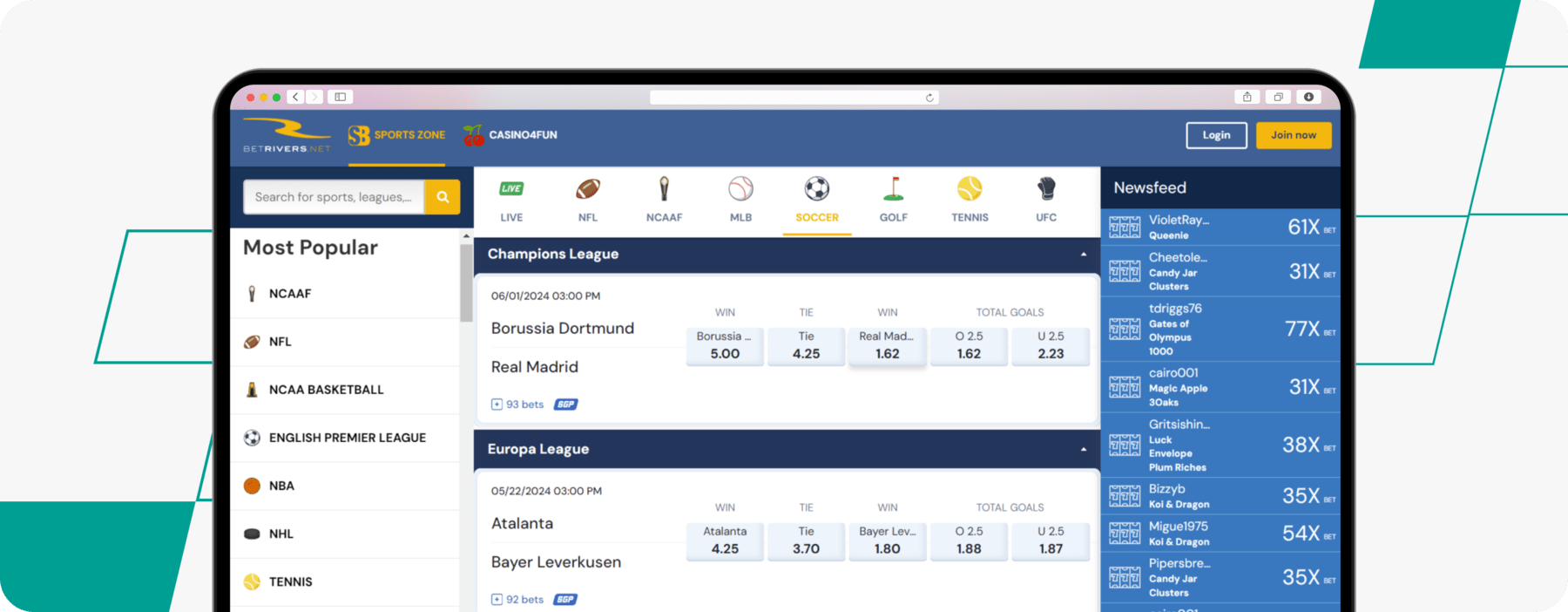It can be intimidating and confusing for beginner bettors when walking into or logging into a sportsbook and seeing all of the different sports betting odds displayed. Once they understand the intricacies and exactly what they mean, it becomes much easier to sports bet. In this guide, we’ll walk you through different odds and explain how to read them.
- 1 What Are Betting Odds?
- 2 What are American Odds, and How Do They Work?
- 3 What are Fractional Odds, and How Do They Work?
- 4 What are Decimal Odds, and How Do They Work?
- 5 What Is Implied Probability?
- 6 Are Odds Different Depending on Sport?
- 7 Where Can I Find the Best Odds in the USA?
- 8 ThePuntersPage Final Say
- 9 FAQs
What Are Betting Odds?
Many new punters ask the question: What do sports betting odds mean?
They are figures representing the probability of a particular result occurring in a sporting competition.
Oddsmakers at sportsbooks set the odds, which can be presented in various formats such as decimal (European), fractional (British) and moneyline (American) odds.
How do sports betting odds work?
Higher odds indicate an event being less likely to occur with a possibly larger payoff, whereas lower odds imply a more probable scenario with a lower return.
Bookmakers determine what odds to provide based on different criteria, including prior contest results, the team or player's current form, injuries, squad modifications, weather, the amount of money bettors are risking and odds at other competing sportsbooks.
Odds are also known as “lines”. When a sportsbook displays the “game lines,” it’s referring to the odds.
The United States features popular sportsbooks such as FanDuel, DraftKings, BetMGM and Borgata. All four of these operators are legal and regulated by the state each one operates in. When writing reviews at TPP, we check the odds at each operator.
Odds for the same event are rarely identical across sportsbooks. One book will have better odds for a certain wager, so it’s important to odds shop across different bookmakers to ensure you’re betting on the best possible line. Sports betting odds comparisons are shown on many free online odds shopping websites.
What are American Odds, and How Do They Work?
American odds include numbers with a plus (+) or minus (-) symbol. A negative value, such as -130, indicates you need to bet $130 in order to make a $100 profit. A positive value, such as +170, suggests a $100 wager will result in a $170 profit. You will be returned your initial wager along with the profit.
Long shots and favorites are calculated in the same manner. A +1400 long shot would pay out $1,400 for a $100 bet. A -1100 favorite means $1,100 would have to be bet to profit a $100.
These odds correlate with any bet type including the spread, moneyline, total and player props.
The picture below showcases bet365 Sportsbook displaying American odds.

What are Fractional Odds, and How Do They Work?
Fractional odds, which are widespread in countries such as the United Kingdom and Ireland, show the possible profit you could make relative to your wager. The first number in the fraction (for example, 5/2), reflects your gains if you wager the same amount on the second number. So, at 5/2 odds, you win $5 for every $2 staked.
In that scenario, you would read out the 5/2 as “five-to-two.” You could use it in a sentence as: “Xander Schauffele is five-to-two to win the PGA Championship after his stellar first round.”
The following example is also from bet365 Sportsbook, showing fractional odds.

What are Decimal Odds, and How Do They Work?
Decimal odds, which are prevalent in Europe and at many sports betting websites in Australia, can be calculated by multiplying the wager by the odds.
Another way of looking at it is the decimal odds number shows the amount the bettor could receive for every $1 wagered (the entirety as opposed to solely the profit).
For example, if a bet has odds of 5.00 and you bet $1, you’ll receive $5. Should you bet $10, you’ll receive $50 in total.
The larger the decimal number, the less probable the event is to occur, but the possible reward is greater.
The example below features BetRivers with decimal odds.

What Is Implied Probability?
Implied probability (also referred to as implied odds) refers to the estimated chance (percentage) of a result happening as assessed by betting sites, and it is displayed with odds.
It is a conversion system that highlights the likelihood that the outcome of a wager will be what the betting odds suggest. By converting the betting odds into a percentage, the implied probability can be found.
This may sound confusing, but it is a super helpful metric. That’s because you can leverage implied probability to estimate the chance of an event occurring differently from the sportsbook odds. If you can figure out this information, you can make betting adjustments that stack more in your favor.
Let's say you give a team a 70% chance of winning, but the sportsbook has it at 60% through implied probability. This could be a bet worth taking.
However, a standard betting odds conversion into a percentage will also include the vigorish or “vig,” which is just a jargon name for the house edge. When the “vig” is included in implied probability, it will push the result above 100% (known as an overround). You can only get an accurate idea of the implied probability by calculating without the vig.
Risk/Return = Implied Probability
We’ll show you an example with the Golden State Warriors as the favorite (-130) taking on the New York Knicks as the underdog (+110). Calculating implied probability is much easier with the + odds, so let’s start there.
The formula is 100 divided by the positive odds + 100, which in this example is 100/110 + 100. The answer to this formula is 0.476, which becomes 47.6%. In other words, the sports betting site would give the Knicks a 47.6% chance of winning.
On the other hand, negative betting odds are a little harder to convert into an implied probability percentage. The formula is the negative odds divided by the negative odds + 100. Yes, the negative number does appear twice in this method.
In this example, the formula becomes 130/130 + 100 and returns an answer of 0.565. Therefore, the bookmaker gives the Warriors a 56.5% chance of winning.
Calculating and analyzing sports betting odds to find the implied probability can help you when deciding on what team or player to bet on. Readers can use our sports betting odds calculator to easily determine the implied probability of any set of odds.
Are Odds Different Depending on Sport?
The odds themselves don’t change from sport to sport. They will always be displayed in either American, Fractional or Decimal. What does change is the bet types, since there are different rules for each sport.
Football Odds
The common odds for football bets are assigned to the moneyline, point spread, totals and player props.
The hypothetical scenario shows the odds for the various wager types.
The Dallas Cowboys (-200 on the moneyline) could be hosting the New York Giants (+145 moneyline). The Cowboys would be favorites on the point spread (-3) compared to the Giants (+3).
An operator would assign a total such as 42 with the over at -115 compared to the under at -115. Player props can include Dallas quarterback Dak Prescott listed at over (-125) or under (+110) 267.5 passing yards.Other player prop categories include yardages, interceptions and passes thrown. Many punters also enjoy betting on the first touchdown scorer and “anytime touchdown scorer.”
Basketball Odds
Basketball odds are displayed similarly to football for its spread, moneyline and totals. Player props include totals for points, assists, rebounds, blocks, steals and three-pointers. The following table shows the primary wagers and odds at FanDuel Sportsbook for Game 1 of the Eastern Conference as the No. 1 seeded Boston Celtics host the No. 6 seeded Indiana Pacers on May 21, 2024.
| NBA | Spread | Moneyline | Total |
|---|---|---|---|
| Indiana Pacers | +10 (-110) | +370 | Over 220.5 (-114) |
| @ Boston Celtics | -10 (-110) | -480 | Under 220.5 (-106) |
Jayson Tatum, the star small/power forward for the Celtics has a point total of 29.5 listed at -113 for both his over or under. Another popular player prop that is quite volatile is the “first basket”. Punters stake which player they believe will make the first bucket of the contest. Jaylen Brown (+440) is the favorite in the Celtics vs. Pacers contest with Tatum (+470) right behind him.
Baseball Odds
Like football and basketball, the main bets for baseball are the spread, moneyline and total. The spread is also called the “run line,” and certain sportsbooks list it as such. It means a certain team is favored by a certain number of runs.
The table below showcases the main bets on FanDuel as the Houston Astros face the Los Angeles Angeles on May 21 at Minute Maid Park.
| MLB | Spread (Run Line) | Moneyline | Total |
|---|---|---|---|
| Los Angeles Angels | +1.5 (-120) | +168 | Over 8.5 (-112) |
| @ Houston Astros | -1.5 (+100) | -200 | Under 8.5 (-108) |
Player props can include hits, home runs and strikeouts. A popular prop bet is the no-run first inning (NRFI) or yes-run first inning (YRFI). The wager depends on if either team scores a run during the first inning.
Where Can I Find the Best Odds in the USA?
DraftKings, FanDuel, BetMGM and Borgata are four of the most renowned sports betting websites across the United States. We’ll showcase some of the best features at each book.
| DraftKings | Offers a $1,500 no-sweat bet for new customers. Also features preset same-game parlays (SGPs) for many top sports. |
| FanDuel | Provides excellent and valuable odds on parlays. FanDuel frequently gives 30% profit boosts on SGPs for major sports leagues. |
| BetMGM | The sign-up promo gives new members $1,500 in bonus bets if their first wager doesn’t cash. There are also boosted player props. |
| Borgata | Daily odds boosts for certain events. Bet $20, get $100 for first-time users. |
ThePuntersPage Final Say
Understanding sports betting odds is imperative when punting and making well-informed decisions. It’d be extremely irresponsible to bet without knowing how they work. Understanding them can help you find value bets, set realistic expectations, mix bets between favorites and longshots, avoid bad bets and help with your research. Remember to odds shop across different bookmakers to ensure you receive the best odds for your stake.
FAQs
Negative betting odds represent the favorite. The figure indicates how much you must bet to profit $100. So, -120 means you have to stake $120 to win $100 (plus your initial $120 back for an entire payout of $220).
Positive odds signify the underdog in a head-to-head matchup or that the outcome is “plus money” and less likely to occur. The number is the quantity you'd earn by wagering $100. For example, with +130 odds, a successful $100 stake would provide a $130 profit (along with the original $100 bet, summing up to $220).
Knowing how to read sports betting odds, positive or negative, can help bettors recognize how much of a favorite a certain team or player is in a match.
Negative odds have the higher implied odds and percentage of the bet hitting. Depending on how negative, you might have to wager a lot to profit a little.
Sports betting odds fluctuate due to a couple of key variables: money and data. As wagers come in for a particular side, sportsbooks modify the odds to encourage betting on the opposing side and secure a balanced outcome for themselves. Furthermore, fresh information, such as injuries or changes in the weather, might affect the expected chance of a team winning or losing, causing operators to adapt appropriately.
This means the team, player or event occurring will pay three times what you bet if it happens. For example, if Scottie Scheffler is 3-1 to win a PGA event and you stake $100, you’ll receive a profit of $300 should he triumph.
A -2.5 spread means that the sportsbook has assigned a team a 2.5-point edge and has labeled them the favorite. If you bet the -2.5 point spread, the team must win by three or more for you to cash the bet.
There isn’t one particular sport that has the best odds. It depends more on your individual knowledge and if you have expertise relating to a certain league or sport. Some niche markets can be less focused on, such as a college football game between two small schools that the bookmaker didn’t put as much attention into compared to a bout between two top-ranked opponents, for example.
A push occurs when your bet is “tied” with the sportsbook. This often happens when you wager on the spread or total and it matches the amount specified by the operator. If this happens, you will receive your initial wager amount back.
For example, if you take the New York Jets spread at “-3” and they defeat the New Orleans Saints by three (23-20). The bet is considered a push.


